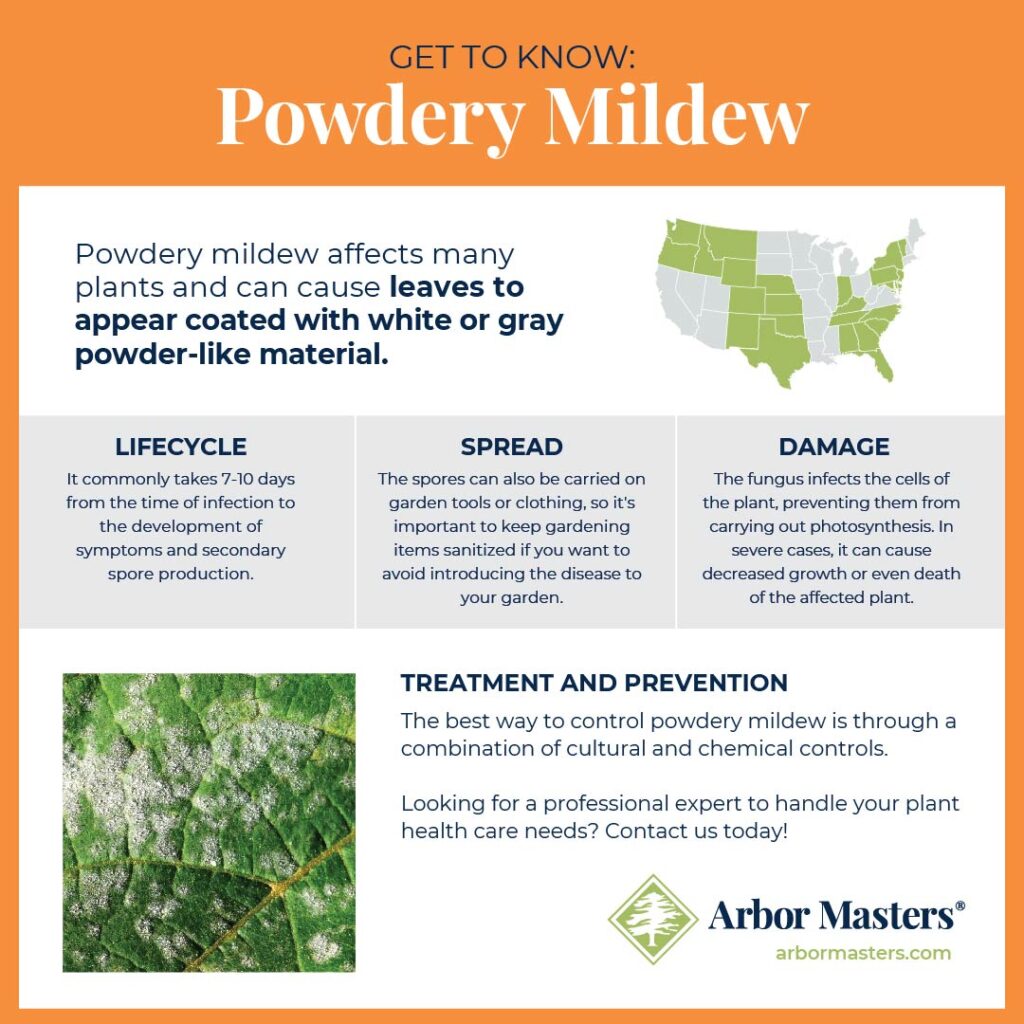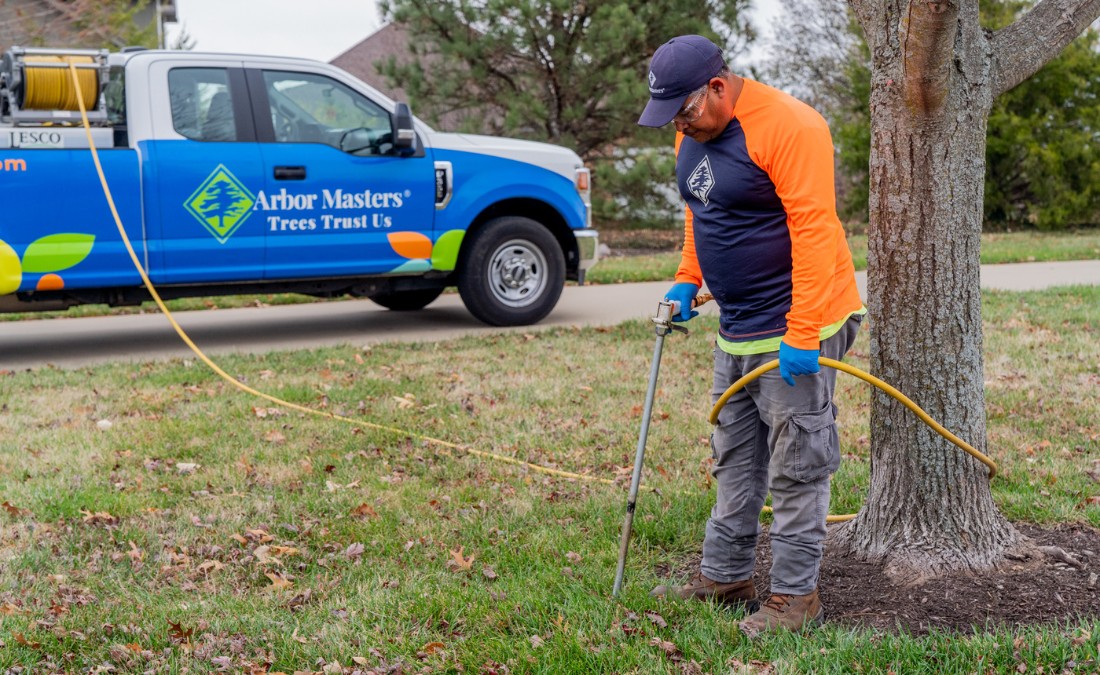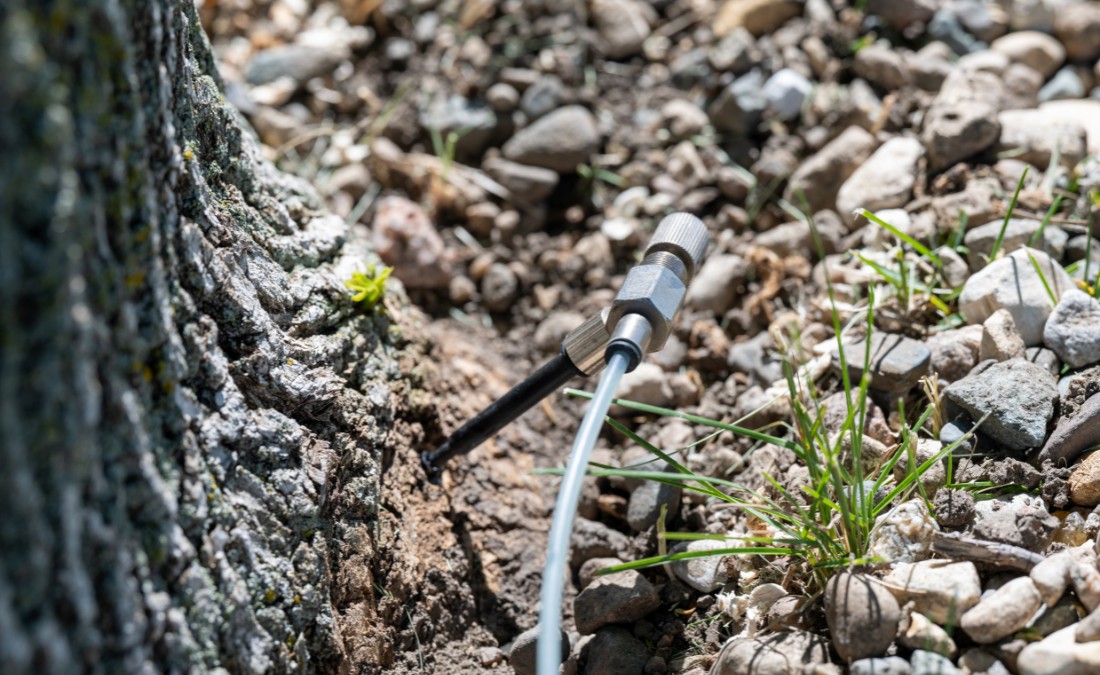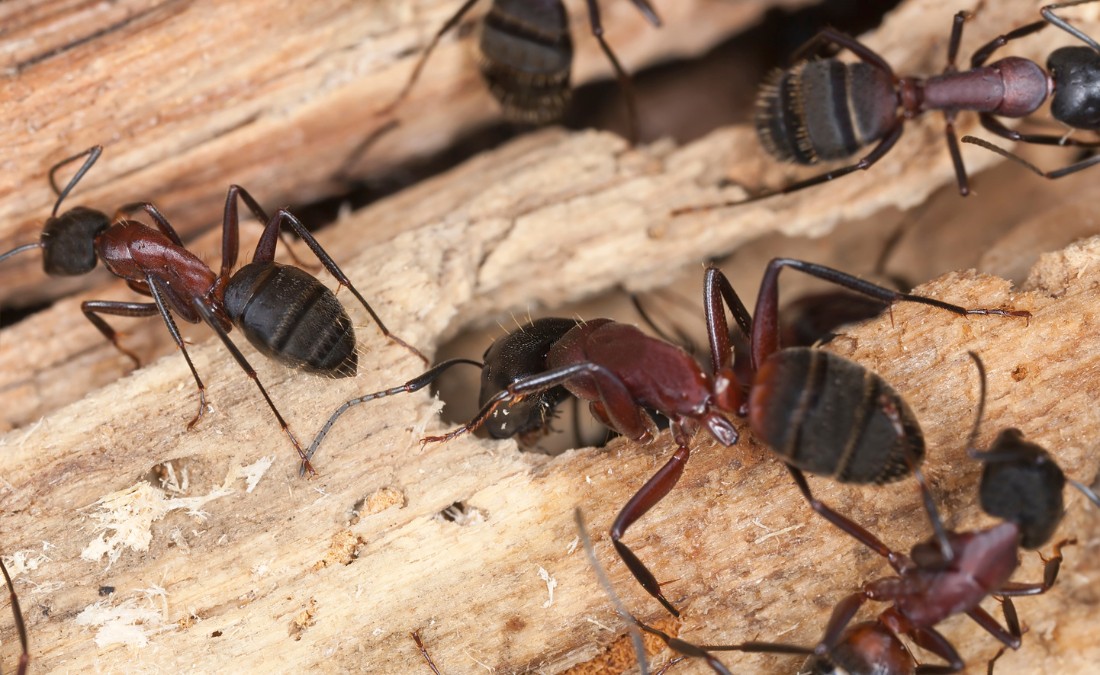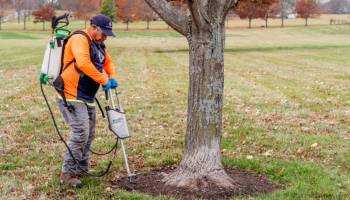Preventing and Managing Powdery Mildew on Your Trees and Plants

Powdery mildew is a fungal disease caused by a variety of species in the order Erysiphales.
What is powdery mildew?
Powdery mildew is a fungal disease caused by a variety of species in the order Erysiphales. It affects many plants and can cause leaves to appear coated with white or gray powder-like material. The fungus infects the cells of the plant, preventing them from carrying out photosynthesis. In severe cases, it can cause decreased growth, or even death of the affected plant.
What does powdery mildew look like?
The most obvious sign of powdery mildew is a white to grayish-white powder covering the leaves, stems, and flowers of infected plants. The infection often begins as small circular s pots that quickly spread across the plant’s surface. As it spreads, these spots may join together into larger patches. In some cases, there may also be yellowing of the leaves and stunted growth. Powdery mildew can also cause fruits to become discolored and distorted in shape. It’s very common peonies, tomato plants and zinnias.

What causes powdery mildew?
Erysiphales fungi can survive on living or dead plant surfaces, and they are spread through either wind or water. The spores can also be carried on garden tools or clothing, so it’s important to keep gardening items sanitized if you want to avoid introducing the disease to your garden. According to Penn State University, powdery mildew grows and spreads best in warm conditions typically during the springtime with low humidity during the day and high humidity at night. To prevent its growth and spread, it is important to have adequate air circulation and sunlight in your garden.
How long does powdery mildew live on surfaces?
Powdery mildew can live on surfaces for up to 7 days in the right conditions. The fungus needs moisture, warmth and a nutrient-rich substrate to survive, so it is important to be mindful of these factors when trying to prevent the spread of powdery mildew.
Is powdery mildew systemic?
Powdery mildew is not systemic, meaning that it does not spread to the plant’s roots or other parts of the plant. As such, fungicides and other chemical control methods should be targeted at the infection areas in order to prevent further spread. However, once a plant is infected with powdery mildew, it can remain a source of spores for other plants and should be removed from the garden as soon as possible.

How to get rid of powdery mildew
- Identify the infected plants and remove them from the area. Discard any debris, including leaves or flowers, that may be on the ground around the diseased plants.
- Spray a solution of 2 ½ tablespoons of baking soda and 1 teaspoon of liquid dish soap per gallon of water onto all affected parts of the plant. This will help to inhibit spore germination and spread. Reapply every two weeks as needed until powdery mildew is no longer visible on the plant’s leaves or stems.
- Cut off any sections of stem that are heavily infected with powdery mildew in order to prevent it from spreading further.
- Apply an organic fungicide to the plant, making sure to cover all parts of the plant that were affected by powdery mildew. Reapply every two weeks as needed until the fungus is gone.
- Clean up debris from around and underneath the infected plants after they have been removed or treated. This can help reduce the chances of reinfection by removing any spores that may be present in the soil or air around them.
At Arbor Masters, we specialize in comprehensive plant health care. We put plants first to keep your home and garden in tip-top shape.
Is powdery mildew harmful to humans and pets?
Powdery mildew is not generally harmful to humans or pets, although it can cause a few mild reactions in some people. In rare cases, the tiny spores contained in powdery mildew may irritate skin or eyes if touched or inhaled. This can cause an allergic reaction with symptoms such as redness, itching, and sneezing. People who are prone to asthma should take extra caution when exposed to the fungus, as it could trigger an asthmatic attack. It is important to note that since powdery mildew is a type of fungus, it can be very difficult to remove from surfaces once it has taken hold. Therefore, it is vital to treat any affected areas immediately to prevent its spread and ensure that your home or garden remains safe. For pets, the same rules apply; although powdery mildew is not generally harmful to them, it could cause an allergic reaction if they come into contact with it. Therefore, it is important to take preventive measures against its spread and strive for a mildew-free environment for you and your furry friends.
How to prevent powdery mildew
 According to Colorado State University, powdery mildew is one of the most widespread plant diseases. Because of this, it is important to keep a lookout for fungus in your garden.
According to Colorado State University, powdery mildew is one of the most widespread plant diseases. Because of this, it is important to keep a lookout for fungus in your garden.
- Regularly inspect your plants for signs of powdery mildew, including white or gray patches on leaves and stems. Early detection is key in preventing the spread of this fungus.
- If you find any signs of infection, immediately isolate the infected plant from others to prevent cross contamination.
- Keep your garden well-ventilated by spacing plants properly and pruning away overcrowded areas; this will reduce humidity levels which can help limit the spread of disease.
- Water your plants early in the day so that the sun can dry off excess moisture quickly and discourage fungus growth; avoid wetting leaves directly when watering as diseases thrive in moist environments.
- Use a fan or air circulating device to blow air over the leaves of your plants; this will help keep the environment dry and reduce powdery mildew growth.
- Keep your garden clean by removing dead leaves, stems, and other debris as often as possible; this will prevent favorable conditions for disease-causing organisms.
- If you notice any signs of infection, spray the affected area with a fungicide or mix a solution of equal parts baking soda and water to treat it; repeat the treatment several times throughout the growing season if necessary.
- Plant varieties that are resistant to powdery mildew whenever possible, such as certain squash and bean species. This can significantly reduce your chances of getting an infection in the first place.
- If you’ve had problems with powdery mildew in the past, use a preventative treatment such as neem oil or sulfur-based sprays before planting season to help reduce your chances of getting an infection.
- 1Finally, practice good gardening habits such as avoiding overcrowding plants, rotating crops on a regular basis, and using resistant varieties whenever possible; this will improve your chances of preventing powdery mildew from taking over your garden.
By taking these steps, you can ensure the health of your garden and abundance of blooms for years to come.
Keep your yard in its best shape! Contact us today to start your comprehensive plant and garden care plan.

Get the latest local news, tree care tips, special offers, and company updates directly to your inbox! It's easy to subscribe and there's no spam - we promise.
"*" indicates required fields

